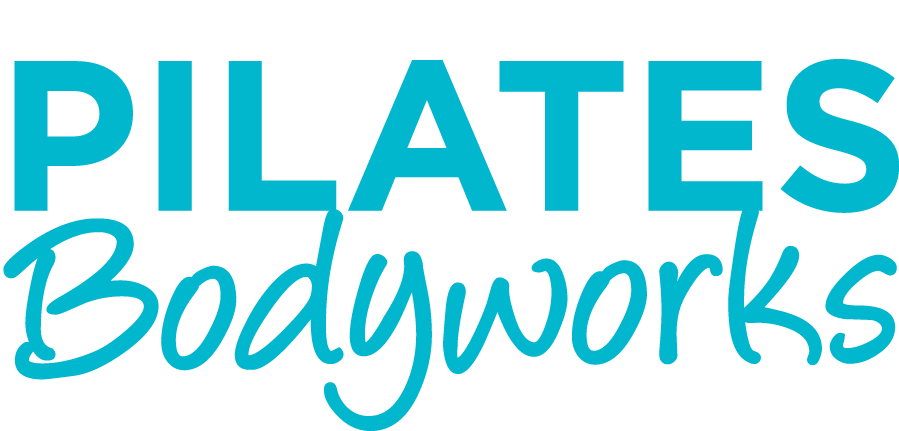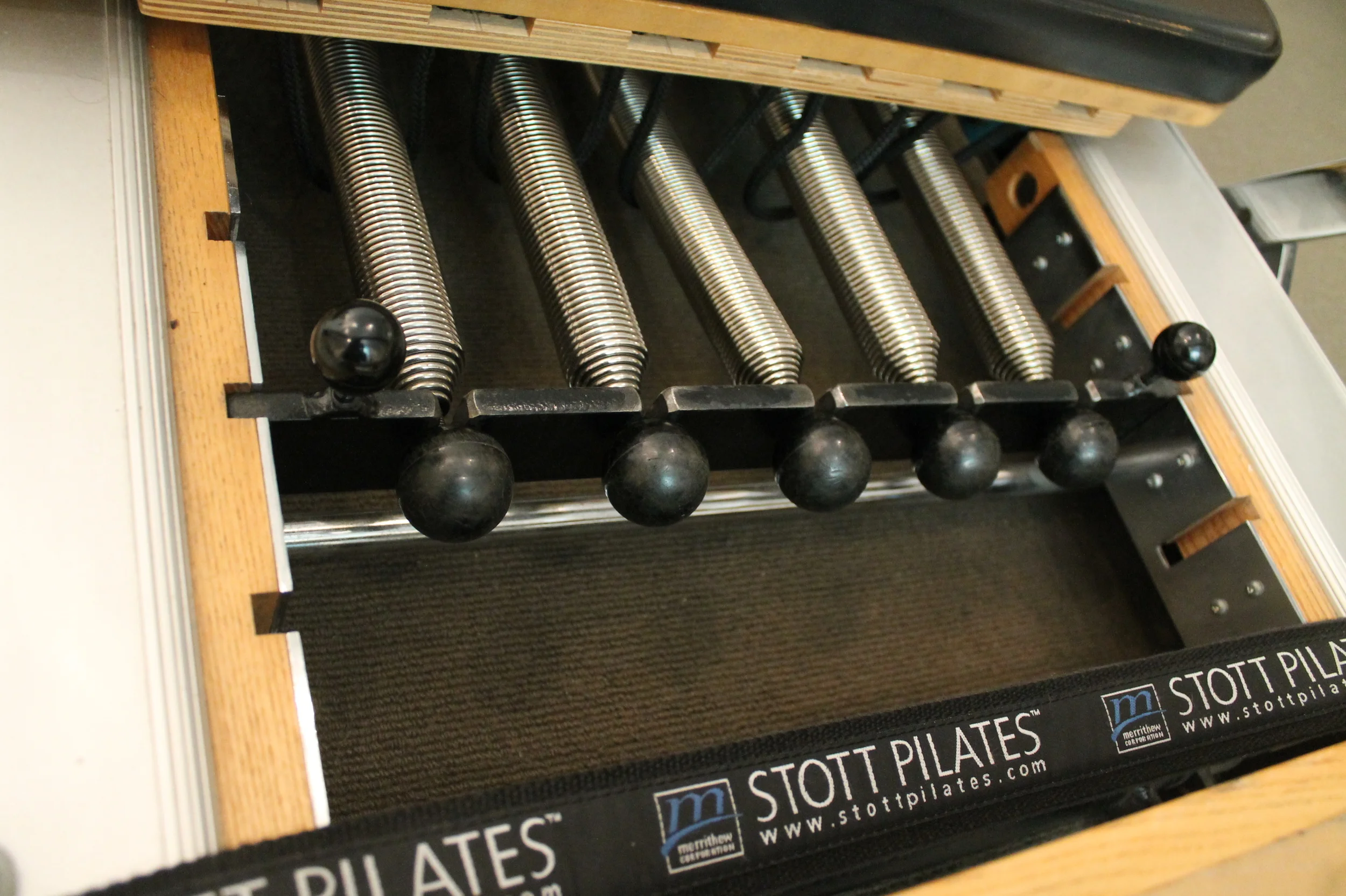Frequently Asked Questions
1. What exactly is Pilates?
In the 1930’s, Joseph Pilates developed a series of exercises on the mat and on various equipment which he invented to strengthen the core, lengthen the spine, increase body awareness, build muscle tone and gain flexibility. The Pilates technique develops strong abdominal & postural muscles to support the skeletal system and act as the “powerhouse” of the body. It works several muscle groups simultaneously through smooth, continuous motion, with a particular concentration on strengthening and stabilizing the core. It is a balanced blend of strength and flexibility training that improves posture, reduces stress and creates long, lean muscles without bulking up.
The focus is on quality of movement rather than quantity, which makes one feel invigorated rather than exhausted after a session. Pilates takes a balanced approach so that no muscle group is overworked and the body works as an efficient system in sport and daily activity.
2. What are the benefits of Pilates?
With regular committed Pilates sessions you can expect to:
Improve strength, flexibility and balance
Tone and build long, lean muscles without bulk
Challenge deep abdominal muscles to support the core
Engage the mind and enhance body awareness
Condition efficient patterns of movement making the body less prone to injury
Reduce stress, relieve tension, boost energy through deep stretching
Restore postural alignment
Create a stronger, more flexible spine
Promote recovery from strain or injury
Increase joint range of motion
Improve circulation
Heighten neuromuscular coordination
Offer relief from back pain and joint stress
Correct over-training of muscle groups which can lead to stress and injury
Enhance mobility, agility and stamina
Compliment sports training and develop functional fitness for daily life activity
Improve the way your body looks and feels
3. What age group is Pilates for?
Pilates can be beneficial for virtually all ages, fitness levels and body conditions. The method is like a bridge between physical fitness and physical therapy, and can be adapted, modified and customized for individual needs. Some advanced moves and sequences seem to demand youthful energy yet others are manageable for even the frailest physique. It's more about fitness condition than age. One's chronological number doesn't necessarily limit one's movement capabilities - sometimes a 75 year old can perform contortions on the Trapeze Table while a 20 year old struggles with a simple roll up.
4. What's better, mat or equipment Pilates exercises?
It's not a matter of one being better than another. The fundamental Pilates workout can be performed on a Pilates mat alone, and great results can be achieved through beginner, intermediate and advanced moves. However, the various equipment incorporate both light and heavy spring resistance to enable concentric and eccentric muscle contractions to safely sculpt, tone and stretch the muscles. This includes the Reformer, Trapeze Table, Wunda Chair, Spine Corrector, Spring Wall, Ballet Barre and Bodhi Suspension System. Smaller Pilates accessories such resistance bands, Pilates circles and exercise balls also provide an element of variety and focus to a Pilates regimen.
5. How do I get started on a Pilates exercise program?
Find a studio that offers small group classes where you get to do exercises that are tailored to your body. Most people join a group class at a gym or a Pilates studio where everyone does the same exercises with minimal supervision or correction. In most of these places, the instructors do not have any background knowledge of the clients. As a result, the participants have no clue if they are doing the exercises with the correct technique or alignment. A studio that tailors your personal program and supervises your exercises is the best way to ensure you get the maximum benefits.
Our studio offers group classes that have a maximum of four people. This allows for close supervision and customisation. We also recommend anyone new to Pilates to start off with one-on-one initial consultations/assessments.
6. How often should I do Pilates and when can I expect to see results?
Consistency is the best guarantee when it comes to seeing and feeling the results of Pilates. A lot of our participants come once a week consistently and they reap the benefits of Pilates. If your lifestyle and schedule allow, we can do more sessions per week.
The amount of time it will take to notice results will vary depending on your body awareness, technique and consistency. Some people feel the results after just one class!
7. Why do Small Group Pilates cost more?
Firstly, you get the personalised attention. These sessions have small numbers to allow for close supervision. The instructors have the capability to modify the exercises or adjust the programs to suit the individuals on a regular basis. Unlike many Pilates classes out there, the individuals in Small Group classes do not perform the same exercises.
Studios that offer Small Group Pilates hire Pilates instructors who are highly trained professionals. They invest hundreds of hours studying the technique. They learn over 500 exercises for both the mat and Pilates equipment. Most importantly, they learn the science behind each movement, spend considerable time observing and mastering proper form and sequences, and apprentice to fine tune their teaching skills prior to taking a rigorous written and practical exam. They learn more than just a series of moves, they learn how to assess their students' posture, how to adapt exercises for various body conditions, and how to customize the optimum Pilates program for each individual.
8. What should I look for in a Pilates instructor?
Ideally your Pilates instructor should be certified through a comprehensive Pilates training program, one comprised of lectures, observation, practice, hands-on apprenticing plus a written and practical examination. This level of training is especially important if you are going to be working out on any of the specialized Pilates equipment - some courses only cover mat exercises while others educate trainers in the full range of apparatus. Find out if your trainer is educated in handling clients with specific injuries or body conditions that might warrant a modified approach. A professional Pilates instructor should keep up with the latest developments in exercise science, choreography, small prop usage and more through continuing education workshops. Any background or teaching experience in other movement disciplines such as dance, aerobics or yoga is also a plus. A professional instructor should make good use of visual, verbal and tactile cueing to ensure students are exercising with proper form and technique. Whether you are working out in a small group setting or one-on-one personal training, make sure your Pilates instructor is confident, knowledgeable, responsive and personable so you can have a safe and effective experience.
9. How long does it take to obtain Pilates certification?
It varies depending on the institution. You can obtain certification to teach mat classes in a couple of weekend workshops, especially if you are already a fitness professional. However, if you want to be able to teach on the various pieces of Pilates equipment it takes considerably longer. The more reputable institutions require hundreds of hours of lecture-based coursework, hands-on training, observation and apprentice work before a rigorous written and practical exam. Usually, as a prerequisite, each student must have studied anatomy and already be a certified fitness professional or licensed rehabilitation practitioner before being accepted into a course. Plus there are continuing education requirements to maintain certification status throughout one's career.
10. Will I lose weight through Pilates exercises?
In essence, Pilates exercise is not a cardiovascular workout and burning calories is not it's main focus. However, in conjunction with a sensible diet and some cardio work such as brisk walking, bicycling, aerobics or swimming, Pilates can factor into a weight loss program.
Pilates exercises help strengthen, sculpt and tone the body while building long, lean muscles. Whether the number on the scale goes down or not, you will tend to look and feel better through continued Pilates practice.
11. Can I do Pilates if I'm pregnant?
Pilates is a safe form of exercise that can help you prepare for the birth of your little one. It is important to find a Pilates studio where their trainers are qualified and experienced in prenatal and postnatal Pilates. When you are pregnant, your relaxin and progesterone levels increase, causing the ligaments around the joints to become lax, loose and vulnerable. Your center of gravity will change, compromising your sense of balance. These are just some changes expectant mums experience throughout the three trimesters. It is hence very important the trainers be equipped with the knowledge and expertise to modify the exercises to keep you and your baby safe, while getting you strong and ready for the birth.

